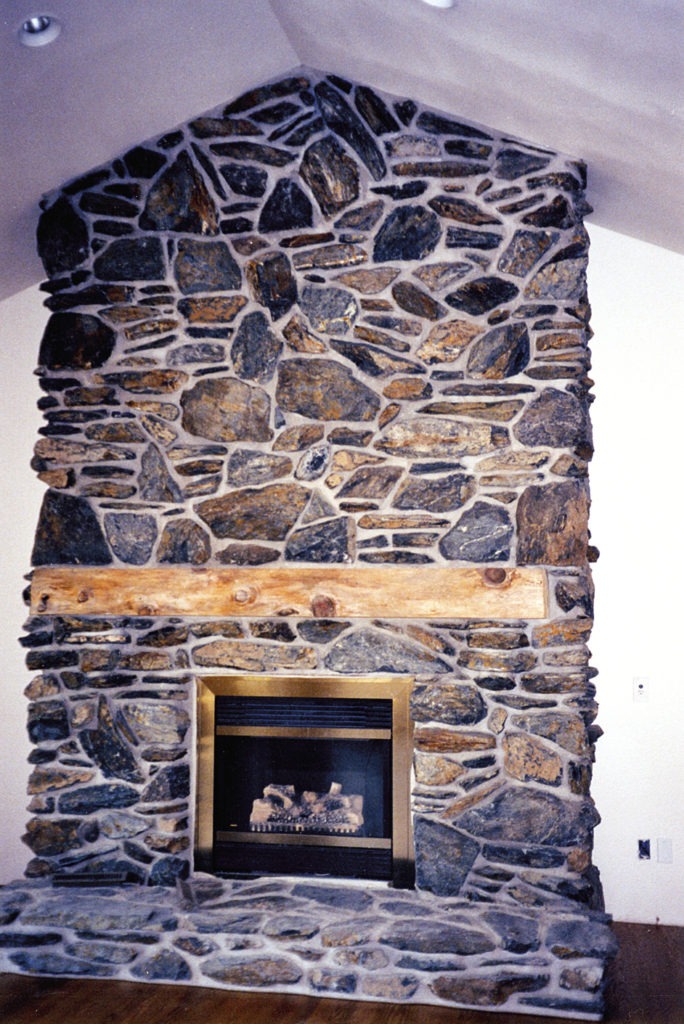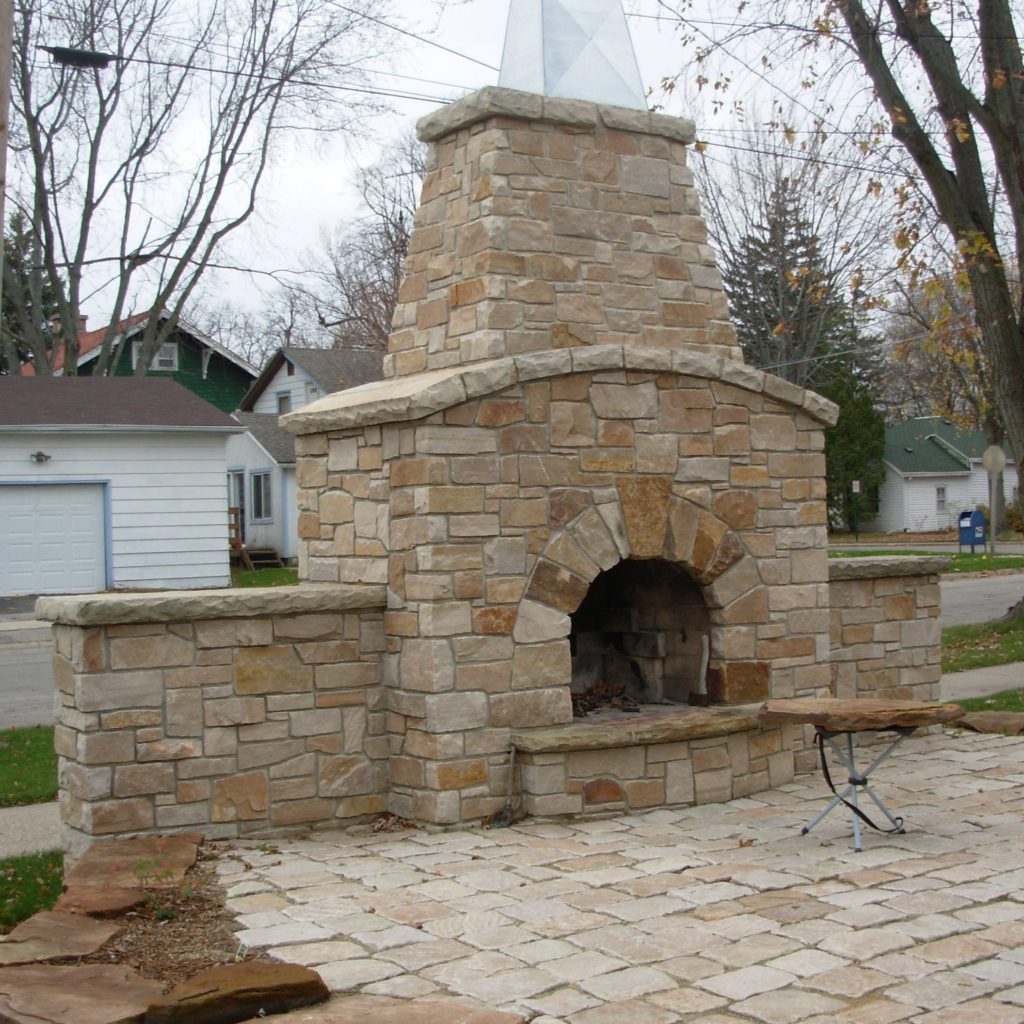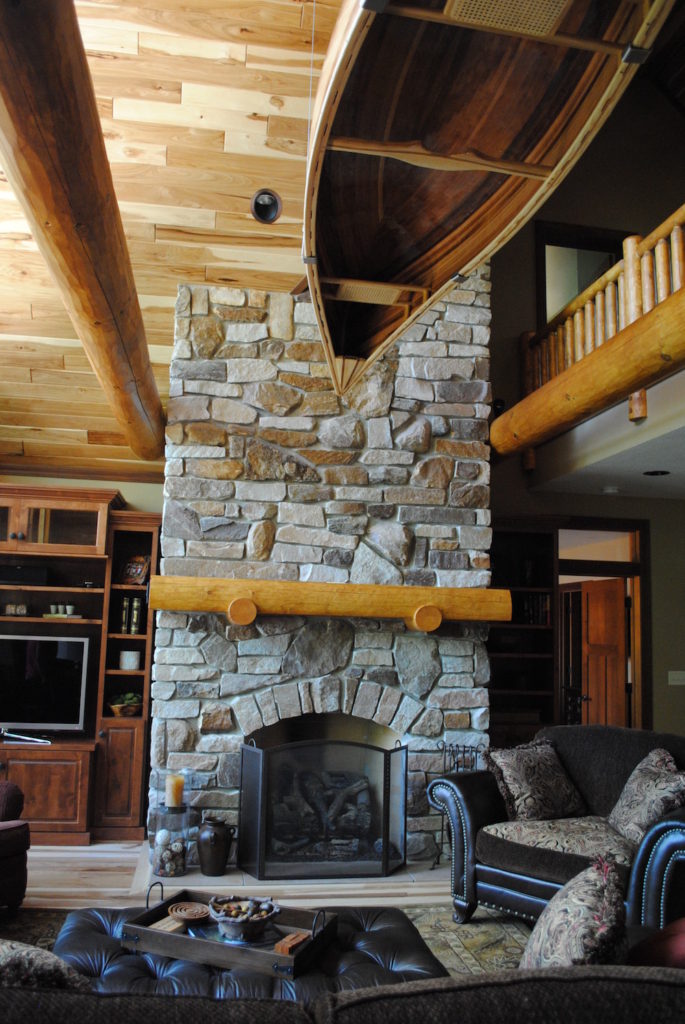Home is Where the Hearth is
Words: Joanie Krukowski-whitt, Rob Wright
Words: Cassandra Stern
Photo Credit: Krukowski Stone
Ever heard of hygge? This oddly spelled word of Dutch and Norwegian origin perfectly describes a feeling we all share, regardless of our culture. In both Danish and Norwegian, hygge refers to "a form of everyday togetherness", and "a pleasant and highly valued everyday experience of safety, equality, personal wholeness and a spontaneous social flow.” In other words, hygge means that cozy, familiar, safe feeling of complete contentment- something that often occurs when snuggling by the family fireplace during a freezing winter storm.
Fireplaces have historically been essential components of a family home. As source of light, heat, and safely cooked food, the human race may have looked very different today without one. While the basic functionality of a simple fireplace has changed little throughout the years, the aesthetic has evolved alongside a variety of different design trends.
Natural stone is one of the most enduring construction materials available, and is well-suited to perform exceptionally as a fireplace thanks to its durability, resiliency, and heat retentive properties. Whether indoors or out, natural stone can add beautiful texture and color to any space, and serves as a gathering point for both guests and family alike. When considering a natural stone fireplace, there are several important things to know before making the right selection for a project design.

What’s a Natural Stone?
There are thousands of different types of natural stone, but several are particularly effective in an indoor or outdoor fireplace. The scale and type of project will help dictate what type or types of stone or will be the best fit, and thanks to their versatility, there are numerous options of natural stone available for virtually any design.
For a more modern feel, limestone and soapstone are fresh and minimalistic and a popular choice for new construction. Conversely, marble is a rich material that adds depth to any space and has been used for hundreds of years to add an imposing, formal quality to any space. One of the most popular materials today is granite, which is an excellent option for a contemporary indoor or outdoor fireplace design. Due to the natural composition of the stone, every piece is individual and has its own unique colors, textures, and shape.
For indoor designs, granite is a great conductor of heat, while limestone is a fantastic heat absorber. Additionally, both soapstone and basalt are excellent when it comes to storing heat, and then evenly dispersing it over time. Says Joanie Krukowski-Whitt of Kruskowsi Stone, another excellent option for indoor fireplaces is “a natural quarried stone thin veneer product, which can be applied without the additional cost of the footing.” Thin veneer products are not only cost savers; they’re also weight savers too. One unfortunate, but unavoidable fact is natural stone can be quite heavy, which requires additional labor to foot the material.
While weight and heat retention are certainly important considerations when selecting a fireplace material inside, outdoor fireplaces have a completely different set of needs. Says Krukowski-Whitt, these natural stones must “hold up in a climate that the outdoor fireplace is located, one that is strong…and is not affected by salt nor will spall.” While those in the Northeast and Midwest may love the look of a soft or porous stone, they “will fail in a climate where there are many freeze-thaw cycles,” she adds, making an important point to note the typical weather patterns when constructing an outdoor project. Although a client may prefer the look of a certain stone, if it is for an outdoor fireplace, it simply may not be possible and a comparable substitution should be sought.
But Why Natural Stone?
“There is nothing that compares to a natural stone material,” states Krukowski-Whitt, and it certainly does seem that way. First, natural stone products are in a league of their own when it comes to durability. Extremely resistant to heat, water, and mold damage, natural stone is also a colorfast building product that can handle heavy daily use- making it a favorite material for the extreme heat generated with an indoor or outdoor fireplace. “Natural stone has extremely good durability, maintains its color and beauty indefinitely, and is available in a tremendous variety of colors and patterns,” adds Rob Wright, Director of Sales and Marketing at Stone Age Manufacturing, Inc.

Natural stone isn’t just durable, it is also an incredibly low maintenance product as well. “The exterior generally requires little to no maintenance,” explains Wright, but “a fireplace's chimney should be inspected every year, and should be cleaned as needed,” which is just good practice for general home maintenance. Krukowski-Whitt agrees, simply recommending that “depending on the stone, mild detergent and water” are the only things necessary. Considering that “there is nothing that compares to the natural beauty of real quarried stone,” as eloquently put by Krukowski-Whitt, it is certainly an added benefit that there is minimal product maintenance or cleaning required after installation.
Natural stone fireplaces are also boast incredible longevity. Indeed, “the longevity of natural stone is forever,” says Krukowski-Whitt, and it’s difficult to disagree. While we call them ancient ruins, the fact remains that many of the world’s oldest buildings made of stone because stone survives while other building materials weather and eventually disappear. An indoor or outdoor fireplace’s lifetime can span centuries without losing its beautiful look, and stunning examples of this construction can be seen all over the world. Adds Krukowski-Whitt, “there is certainly added value and beauty when you invest in natural stone.”
Finally, natural stone products are a sustainable and green building material. There is a low environmental impact to using natural stone for an indoor or outdoor fireplace project. Additionally, as a conductive or heat sink source, natural stone serves as a low- to energy-free means of the home’s climate control and temperature regulation. Fireplaces do emit low amounts of carbon (from the burning wood) but gas fireplaces are great low emission alterative, and both can be beautifully designed and constructed with natural stone products.
Natural Stone Fireplace Styles
The two best options for an indoor or outdoor fireplace are wood and gas burning fireplaces, although ethanol and electric options are also available. Wood burning fireplaces are common both in- and outdoors, and a classic wood burning fireplace can vary greatly in installation, heat production and cost effectiveness. The first, most traditional style is the open hearth, which has existed for hundreds, if not thousands of years and can be an indoor or outdoor fireplace option. Unfortunately, this style is difficult to add to existing construction and requires considerable labor to install both the opening and chimney for proper venting. A second wood burning option is an enclosed fireplace, which encases the burning flames with a pane of glass. While seemingly an indoor-only option, plenty of outdoor hardscape patio areas benefit greatly from the addition of enclosed fireplaces.

Gas fireplaces can also be built beautifully with natural stone, and burn more cleanly while giving off more heat for what is typically a lower overall operating cost. Additionally, even with natural stone products, gas fireplaces typically require “less construction or reconstruction to install, making them an attractive alternative to traditional wood-burning fireplaces,” according to fireplace manufacturer Compact Appliance. Gas fireplaces can be direct-vented or ventless, depending on the existing space. A direct-vented built-in fireplace can be venture through an existing or newly constructed chimney, while ventless is the simplest to install as it lacks a need for a chimney or vent. As direct-vented gas fireplaces typically burn yellow and ventless blue, both indoor and outdoor gas fireplaces can be constructed with specific natural stone products that naturally complement the flames for a dramatic final effect.
Additional Natural Stone Fireplace Options
One type of natural stone product, as previously mentioned, is natural stone veneer. Explains Krukowski Whitt, “relatively speaking, many natural stone materials are comparable to some of the manmade lookalikes.” For example, “at our facility [Krukowski Stone] we also produce matching landscape stone…and we can make beautiful natural accessory stone pieces, customized specifically for the project.” This allows the entire project to “blend and contrast, if the homeowner prefers, with the many products a natural stone quarrier can provide.” Natural stone veneer has the same durable, low maintenance, and colorfast properties of natural stone because it is natural stone, but is available at competitive cost to its counterpart. Says Krukowski-Whitt, “with the advances in equipment and production, the costs are very comparable. In addition, you get much more value in a natural stone product.”
Masonry modular kits are another product that makes indoor and outdoor fireplace construction easier and potentially more affordable. The kits “simplify the rough in phase of the installation…allowing contractors to be much more efficient with their time and labor costs, increasing their productivity and profitability,” states Wright. In order to use a masonry modular kit, like the ones produced by Stone Age Manufacturing, the first step is to “prepare the site by pouring a footing appropriate for the fireplace being installed, including a brick ledge as needed to support the finish material.” Once that is completed, continues Wright, the contractor must “maintain proper clearances to combustible materials, and follow the traditional 2-10 rule for chimney height.” Additionally, it’s important to assemble any fireplace, either indoor or outdoor, with heat tolerant mortar, regardless of the natural stone type being used. By utilizing a product like a modular masonry kit or thin brick veneer, designing and installing an indoor or outdoor fireplace that exceeds a client’s expectations is efficient and cost effective.
So Why Not Choose Natural Stone?
“No two pieces are alike; there is a story behind every stone quarry,” says Krukowski-Whitt, which is why companies like Krukowski Stone “take great pride in producing a beautiful product that will be showcased in a home built with the pride of the owner.” As a homeowner, choosing the best natural stone product can be complicated. Even by considering the project itself, as well as the aesthetic, properties, and cost, it can still be a daunting task. From limestone to basalt, different natural stones have a variety of looks and attributes that make some better suited to indoor and/or outdoor use, and more options mean more decisions must be made throughout the design process.
However, it’s equally important to remember the long-term investment in a durable, long-lasting, and low maintenance product that will considerably add value to any space, both indoors and out. As a sustainable building material that can fit the needs of most any fireplace project, natural stone stands out as a uniquely beautiful green product, and with gas and electric options, it is easy to customize a space to a client’s particular needs. Thankfully, there are products like natural stone veneer and masonry modular kits to make installation simpler and more efficient for any mason contractor. Whether indoors or out, the addition of a natural stone fireplace will instantly add value to any space, while simultaneously functioning as a warm and friendly place to get some hygge.